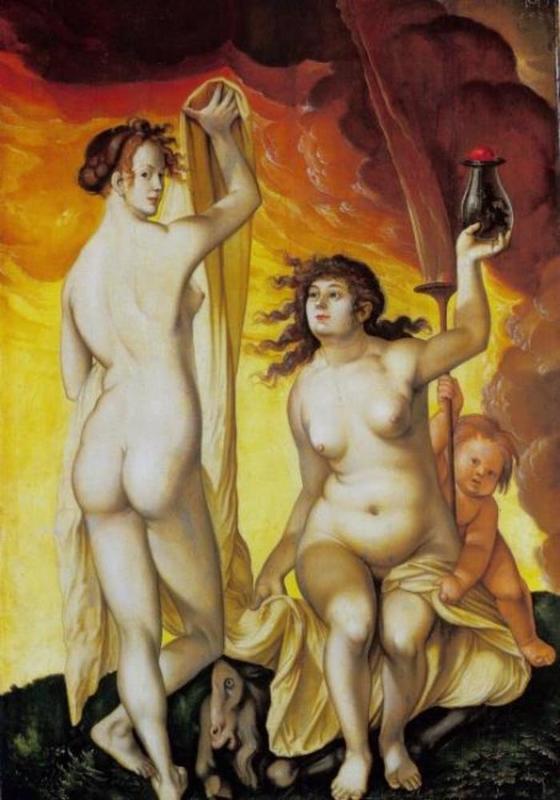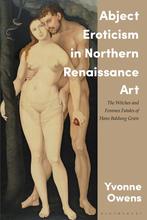More about Two Witches
- All
- Info
- Shop

Contributor
The original German title of Baldung's Two Witches, "Zwei Wetterhexen," gave rise to the name that English-language authors have used for most of this work's nearly 500-year lifespan: The Weather Witches.
Perhaps the current owner changed the title because of the obscurity of this concept by today's standard: what is a "weather witch," anyway? In Medieval Europe, people blamed almost everything on witches, including storms: Baldung presents these women pausing mid-ritual, as if we have accidentally interrupted them, trying to conceal the sacrificial goat, while a little cupid-like baby, the messenger of lust, observes them. Attributing weather to witchcraft, rather than the Divine Will, reflects the gnostic idea that was popular, with divine forces replaced by an imposter, the demiurge, a real jerk who pleases our senses with beautiful sunsets, cute furry animals, and attractive people, simply in order to snare us in sin. The baby, however, could imply the omnipresence of the Creator.
In the 1980's, art historian Linda C. Hults published a series of articles on the Two Witches and Baldung's other witch-themed works. For Hults, the works are distinct for collapsing objective narration into subjective experience, specifically, the sexual arousal and fantasy life of the viewer, in order to convey their misogynistic message. The great weapon of misogyny, in this view, is the man's contention that sin is the woman's responsibility, based on a misinterpretation of the book of Genesis and the reasoning that "If you're not a witch, why am I attracted to you?" The witch is a "temptress," and it is she, not men, who is responsible for the proper sexual modesty. "The sexual lusts of the women he creates," Hults writes, of Baldung, "are as attractive as they are threatening." This would place women in a double bind, whereby they are responsible for appearing attractive in order to please men, but if they are too attractive, to the wrong man, at the wrong time, they can receive the harshest forms of punishment. In this sense, unfortunately, not too much has changed.
German scholarship alleges that these women are sex workers, and the painting is designed to prevent the spread of syphilis. This explanation is a little too speculative, even if it has some truth to it. If this work is designed to make men restrain our sexual urges, it draws us in first with female nudes which closely adhere to ancient Roman standards of beauty and posture. By providing the nudes as "bait" for its message of abstinence and modesty, the image runs the risk, like Nancy Reagan's "Just Say No to Drugs," of promoting the very same thing that it seeks to control.
Sources
- Hults, Linda C. "Hans Baldung Grien’s ‘Weather Witches’ in Frankfurt." Pantheon 40, no. 2 (1982) 124-30.
- Levack, Brian P. Gender and Witchcraft: New Perspectives on Witchcraft, Magic, and Demonology. London: Routledge, 2013.
- Neander, August. General History of the Christian Religion and Church, from the German of Augustus Neander, Volume 3. Boston: Crocker & Brewster, 1855.
- Nenonen, Marko, and Raisa Maria Toivo. Writing Witch-Hunt Histories: Challenging the Paradigm. Leiden: BRILL, 2013
- Reichold, Klaus. Paintings that Changed the World: From Lascaux to Picasso. Munich: Prestel, 1998.
- "Wetterhexen." der blaue ritter, https://derblaueritter.de/kunst-hans-baldung-gen-grien-wetterhexen/.
- Zika, Charles. Exorcising Our Demons: Magic, Witchcraft, and Visual Culture in Early Modern Europe. Leiden: BRILL, 2003.












